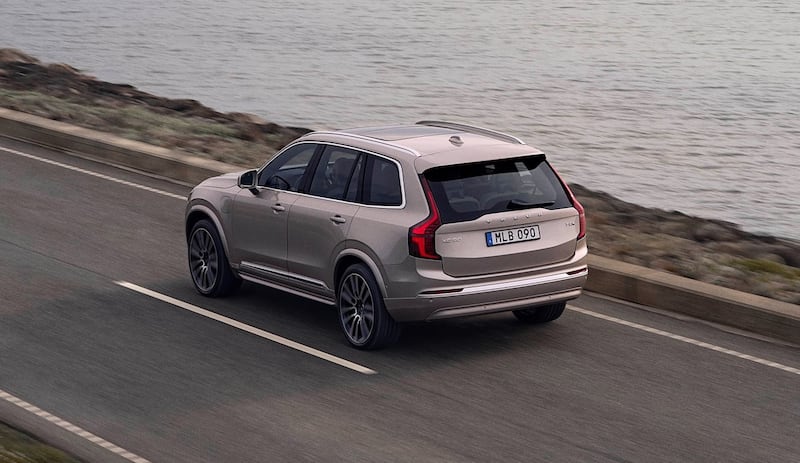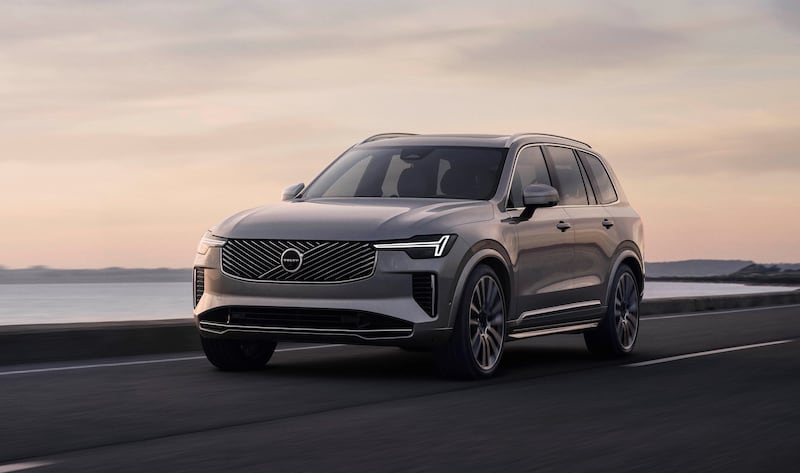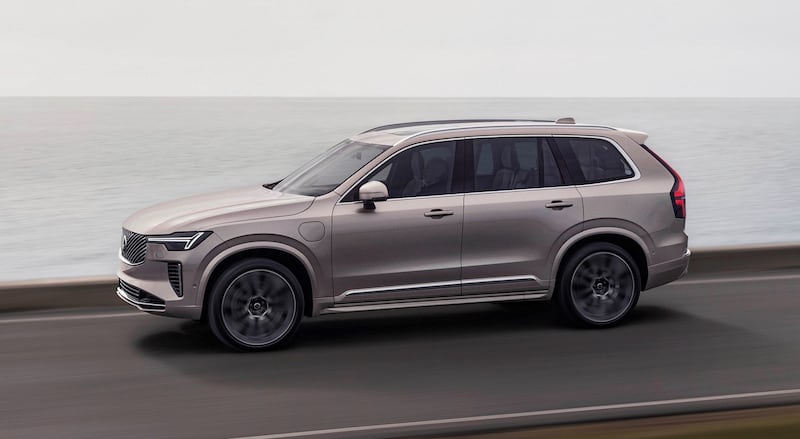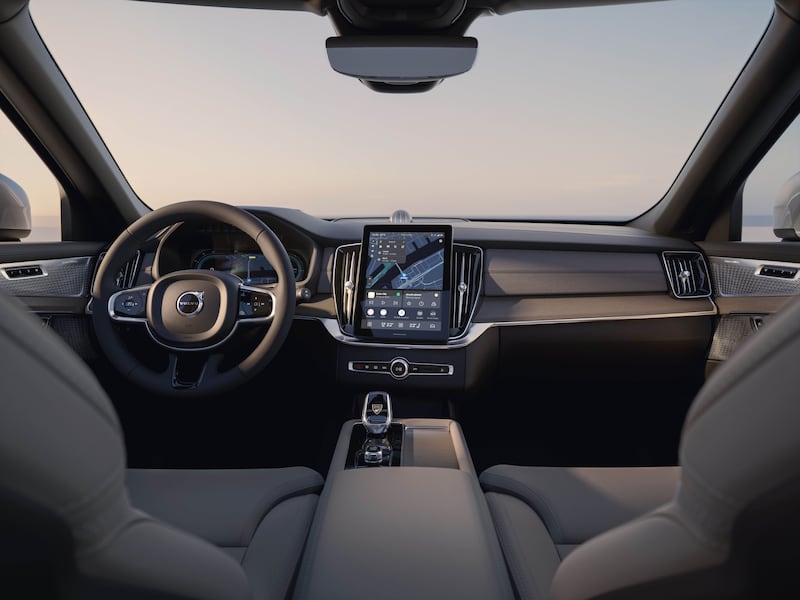While Volvo’s impressive, massive and expensive new all-electric EX90 flagship has been hoovering up all of the headlines, there is an equally significant “new” model – from a sales point of view – also being launched by the Swedish car brand this week.
I say “new” in inverted commas because this XC90 is hardly new. In fact, the big seven-seat SUV has been on sale for getting close to a decade now, having first been launched in this second-generation form in 2015. Then again, its predecessor, the original XC90, had a long life too, staying on sale from its launch over two decades ago, all the way through to the arrival of the current model.

Volvo has given the XC90 a general go-over and gussy-up to keep it fresh for a while longer, but the very fact that this is necessary at all is significant. Volvo has previously said that it wants to be an all-electric car maker by 2030, and although the retention on sale of the hybrid XC90 doesn’t quite blow that out of the water, it does perhaps form a large, four-wheeled, seven-seat admission from Volvo that the final date for its electric switchover may not quite be sacrosanct.

In this, Volvo is simply being realistic, and following the lead of other major car makers – Audi, VW, Ford, Porsche, Toyota and many more – who have, if not quite rowed back on previous promises to go all-electric, then at least lifted their oars out of the water a little.
READ MORE
With car buyers around the world not quite rejecting electric cars, but certainly proving to be less than entirely keen on them when it comes to the broader mass-market, Volvo has little choice. One of its dealers – who asked not to be named – reported to Autonews Europe last month that: “We have to [sell hybrids] or we’ll die.”

So Volvo has quietly confirmed that it will continue to sell plug-in hybrid models for some time to come, possibly as long as a decade yet, especially in the all-important US market. Even as the compact Volvo EX30 electric crossover set some seriously impressive sales figures in Europe – finishing in second place in the European Alternative Fuels Observatory electric car and plug-in hybrid sales charts behind the all-conquering Tesla Model Y in July – the edifice of Volvo’s electric sales ambitions was being rocked by costs.
The China-built EX30 will now be subject to 19.3 per cent tariffs imposed by the European Union. On top of this, a series of issues with the EX30′s software has seen some cars become entirely unresponsive; not helpful in a car that’s entirely controlled through its big touchscreen.
In some cases Volvo has actually had to issue full refunds to customers. In a statement, the company said: “We recognise that this is not what they expect from their Volvo car, and we are working to remedy this as swiftly as possible with the minimum of inconvenience to our customers. In a very small number of cases, customers have chosen to exercise their consumer rights to return their cars. Volvo Cars strives and continues to support its customers throughout the ownership journey, and overall we continue to be encouraged by the positive feedback we are receiving from owners.”
So perhaps it’s no surprise that Volvo is keeping the old XC90 plug-in hybrid around for a while longer yet. On the outside, the updated XC90 gets revised styling which gives it a smoother, more deep-chinned face, bringing it closer into line with the EX90. It also gets a distinctive criss-cross grille at the front, rather like that used by BMW for the new X3.

Inside, while Volvo says that there have been significant changes, you’ll struggle to spot them. There are new cupholders on the centre console (one to hold a narrow soft drinks can), and a new touchscreen that gains in size – 11.2-inches – but which looks as if it’s just been stuck on over the old, fully-integrated screen.
Mechanically, the rear suspension has been upgraded with a new top-link, and there are standard Frequency Selective Dampers for all four corners. There’s more sound-deadening material too.
The plug-in hybrid system remains the same, with a 2.0-litre turbo petrol engine and a 107kW electric rear-mounted motor developing a combined 455hp and with official CO2 emissions of just 29g/km, and an electric-only range on a full charge of 72km.
- Sign up for push alerts and have the best news, analysis and comment delivered directly to your phone
- Join The Irish Times on WhatsApp and stay up to date
- Listen to our Inside Politics podcast for the best political chat and analysis












